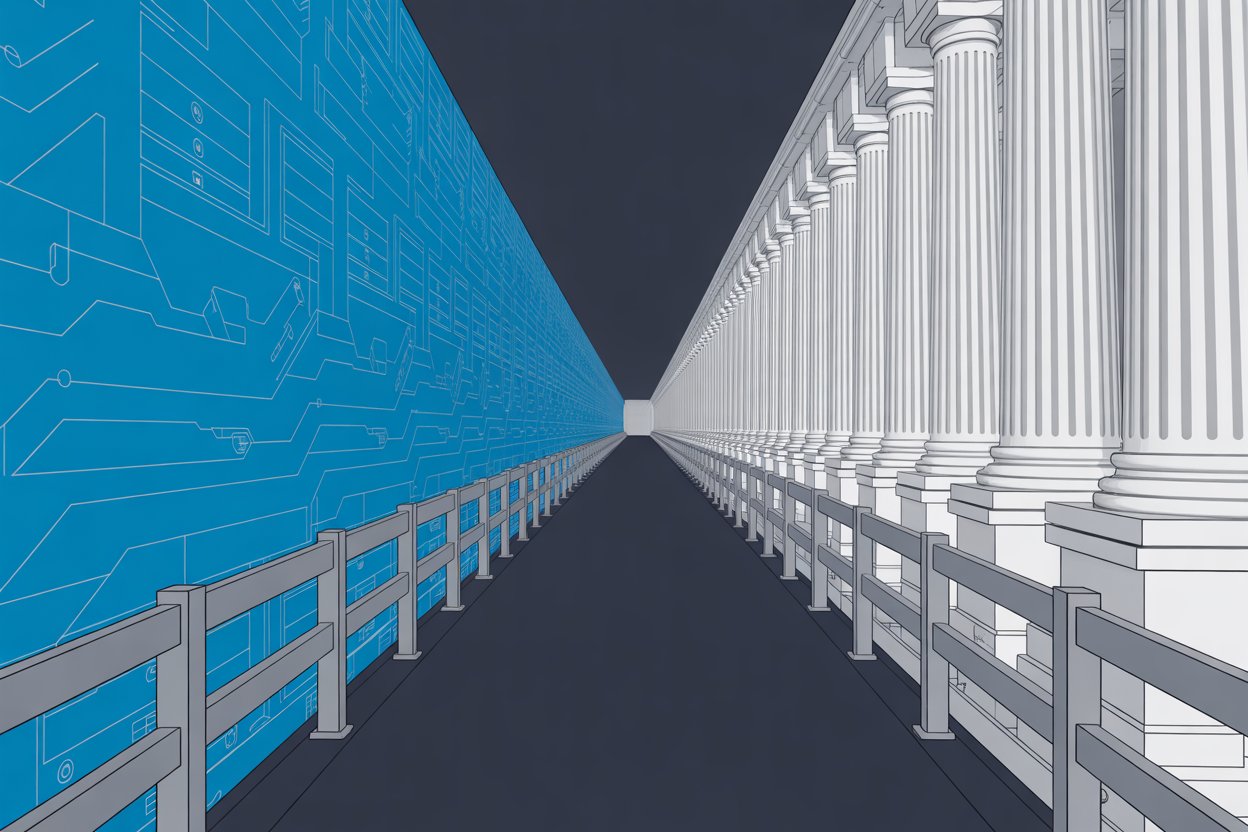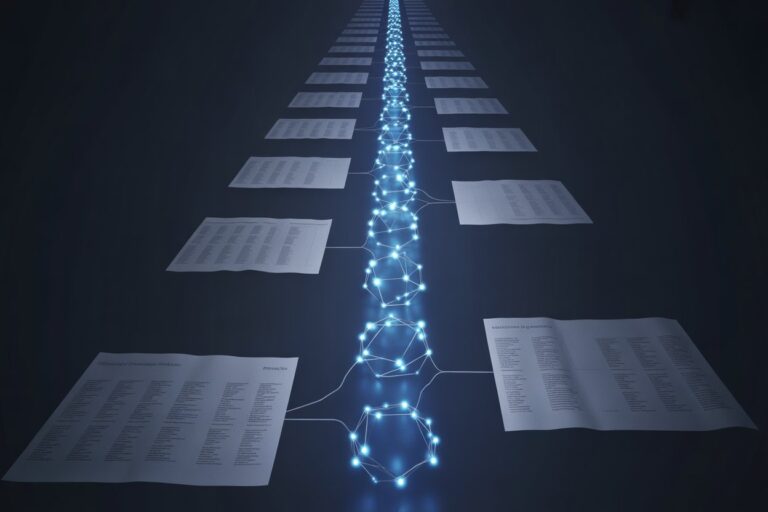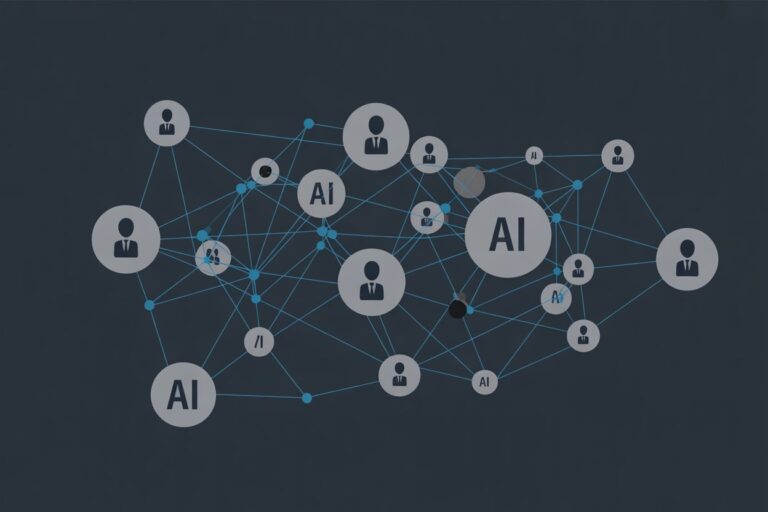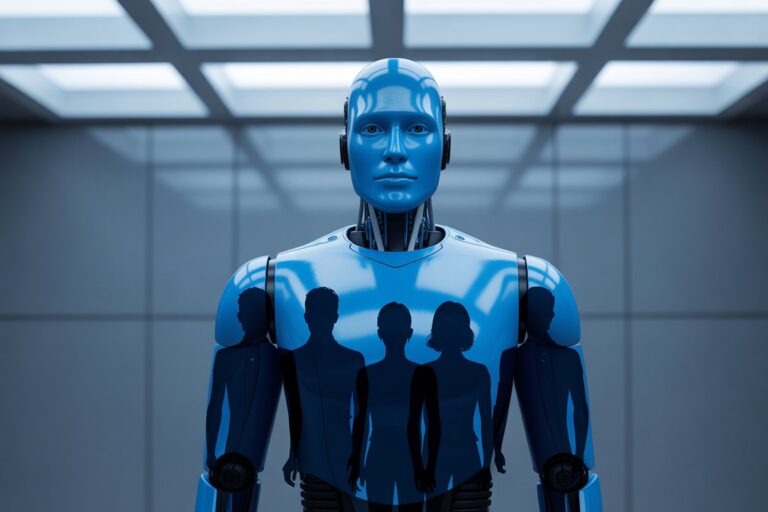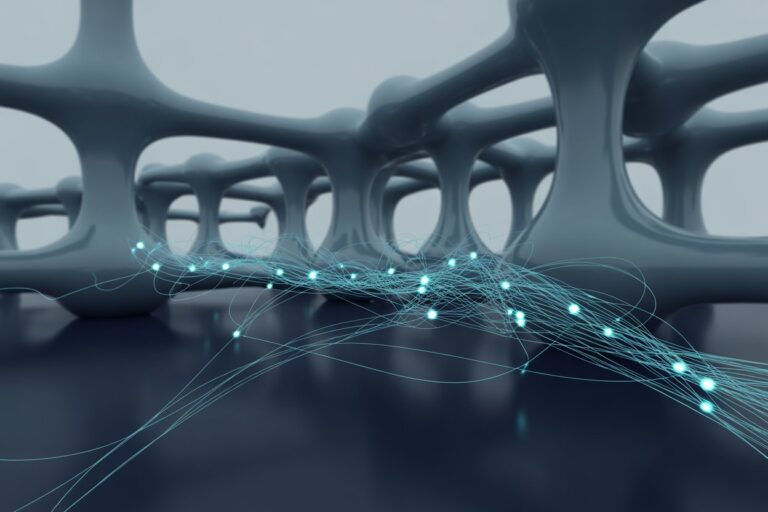When Machines Decide, What Are the Limits of Algorithmic Justice?
What begins as automation may end as authority. Courts worldwide are testing how far software can replace human judgment. Algorithms now draft orders, assess risk, and recommend sentences. The question is whether any system should bear that responsibility.
From AI Assistant to Authority
Delegation is more than workflow automation. It is authority. When governments delegate justice to AI, they are not asking software to take notes. They are handing it the power to determine outcomes, with people bound by the result. That shift raises due process questions about notice, reasons, appeal, and the basic right to be heard.
In public law, delegation has constraints that keep power accountable. The same would be required of any machine that proposes to decide. The test is straightforward to state and hard to satisfy: transparent purpose, explainable reasoning, auditable behavior, and a human failsafe that is real rather than ceremonial.
The Guardrails in Place
Most justice systems now draw a sharp line between using AI to assist and using AI to decide. Judges in England and Wales have formal guidance that allows careful use of AI for drafting and summarizing, while warning against offloading legal analysis or inserting confidential material into public tools. The guidance stresses accountability and keeps final judgment human.
U.S. courts are moving in the same direction. The Delaware Supreme Court set an interim policy that permits limited use of generative tools, requires training and approval, and makes clear that decision making cannot be outsourced. The policy emphasizes caution and responsibility for accuracy. New York’s unified court system adopted rules in October 2025 that restrict use to approved models and bar uploading court submissions into public systems, again preserving human judgment as the final stop. The new policy centers human control and requires training.
Claims that a European government already runs small-claims cases through an automated “robot judge” have been overstated. The idea drew headlines years ago, but the responsible ministry later clarified that it was not developing a system to replace judges. The official statement walked the story back and pointed instead to more modest digital tools that reduce clerical burden.
The Policy Backdrop
International frameworks are converging on a baseline: AI that affects rights requires higher obligations. The Council of Europe’s treaty on artificial intelligence, human rights, democracy and the rule of law sets out principles that apply across the AI lifecycle, with an expectation of transparency and effective remedies. The convention is now open for signature and aims at legally binding commitments.
Across the European Union, the new AI Act classifies judicial and law-enforcement uses among high-risk systems, triggering stricter requirements for governance, testing, logging, and human oversight. The high-risk regime defines thresholds that would apply to any tool that shapes adjudication.
National justice departments are also publishing roadmaps. In England and Wales, an AI action plan describes a scan, pilot, and scale approach across courts and tribunals, with ethics frameworks and data controls as preconditions. The plan frames AI as assistive and embeds judicial independence.
Why Delegation Is Tempting
Backlogs, vacancies, and rising expectations push governments to automate. Small-value disputes, benefits appeals, parking and licensing cases, and mass-claims administration all create pressure to resolve more matters with fewer people. AI promises faster processing, standardized reasoning, and lower cost per case.
The access-to-justice gap adds weight to the argument. If many people never receive a timely hearing, a system that triages or drafts with reliable accuracy looks attractive. Policymakers see room for guided forms, automated explanations, and structured recommendations that a human officer can approve. The pitch is simple: more service delivered, fewer errors born of fatigue, and better records for audit.
Resource disparities could intensify these pressures over time. In theory, wealthier jurisdictions would be better positioned to invest in well-tested, transparent AI systems with proper oversight, while resource-constrained systems might face pressure to adopt less expensive alternatives. Whether such a divide emerges remains to be seen, but the concern is real enough to warrant attention in policy planning.
The Technical and Trust Barriers
Legal judgment is not prediction alone. It requires interpretation, the weighing of competing values, and the articulation of reasons that can be contested. Even advanced models still struggle with reliable legal analysis, especially when records are messy or norms conflict. Research on argumentation-based explainability shows promise, yet it remains early and untested at scale in court settings. Recent work highlights the gap between the logic of argument frameworks and the demands of live adjudication.
Bias and explainability remain central risks. When predictive tools shape outcomes, even indirectly, they can import historical disparities or obscure the path to a decision. High-profile examinations of criminal risk scoring, along with rebuttals and rejoinders, underscore how competing fairness definitions lead to different conclusions. Analyses that flagged disparate error rates and counter-analyses that disputed bias illustrate the challenge: if experts cannot agree on fairness metrics, delegating final decisions to code becomes even harder to justify.
Privacy and data protection add another layer of complexity. Court records contain sensitive personal information, and questions naturally arise about data sovereignty, cross-border processing, and compliance with regulations like GDPR when AI tools require cloud processing or third-party models. Courts will need to navigate these concerns around encryption, access controls, and the risk of inadvertent disclosure as they consider AI deployment.
There is also the legitimacy problem. People accept outcomes more readily when a human explains them, even when they disagree. An opaque model that issues a conclusion without understandable reasons risks losing public confidence. Human rights guidance warns that machine-learning systems can undermine equality and non-discrimination when they lack transparency and effective remedies. The Toronto Declaration frames these duties in rule-of-law terms.
The Right to Challenge
Courts traditionally offer multiple safeguards: parties can examine evidence, cross-examine witnesses, challenge procedures, and appeal decisions. When AI enters the process, these rights become harder to exercise. Questions arise about how a defendant might challenge an algorithm’s recommendation if the model’s weights are proprietary, or how an appeals court could review a decision when the reasoning comes from a black box.
Some jurisdictions are beginning to address these questions. The Wisconsin Supreme Court heard arguments in State v. Loomis, a case where a defendant challenged his sentence after a judge cited his high-risk score from a proprietary assessment tool. The case raised due process concerns about the inability to examine or contest the algorithm’s logic, as documented in the ProPublica examination of risk assessment tools. Courts are now considering whether AI-assisted decisions trigger new disclosure obligations or create grounds for appeal based on algorithmic error.
The liability question remains largely unsettled. When an AI system contributes to a mistake that leads to wrongful detention, denied benefits, or other harm, the question of who bears responsibility becomes complex. Should it be the judge who relied on it, the government agency that deployed it, or the vendor who built it? Insurance markets and legal doctrine have not yet fully caught up to these scenarios.
Misuse Has Consequences
Courts have already seen the downside of careless AI use. In the United Kingdom, judges have warned that lawyers who cite non-existent cases generated by chatbots risk sanctions and even prosecution. Recent warnings highlight accountability and reinforce why human verification is non-negotiable.
Judicial and administrative policies respond in kind. They require disclosure, training, model approval, and careful limits on inputs. The pattern is clear across jurisdictions: AI can help produce drafts and summaries, but it cannot replace independent judgment or the duty to stand behind reasons.
Outside the courtroom, AI has demonstrated value in supporting legal work without making substantive decisions. Machine learning systems have proven effective at document review in complex litigation, rapidly sorting millions of pages by relevance and flagging key evidence. Neural translation systems enable multilingual proceedings to move more efficiently.
Some courts have explored scheduling algorithms that optimize hearing times and judge assignments to address backlogs. These applications suggest a role for AI as a tool that amplifies human capacity rather than supplanting judgment—though each implementation requires careful evaluation of its specific context and risks.
Three Realistic Paths Forward
Assistive first. The near term is heavy on AI that drafts, classifies, and surfaces patterns, combined with strict rules on confidentiality and provenance. Humans decide, and every automated step leaves a trail.
Limited delegation under supervision. In low-stakes domains where facts are structured and remedies are narrow, governments may approve systems that propose outcomes for a human to adopt or amend. Strong audit, appeal rights, and opt-outs would be essential. Parties would likely retain the right to request a full hearing before a human decision-maker, with reasons explained in accessible language.
Narrow autonomy in administrative niches. True machine decisions may appear first in administrative programs that already rely on rules engines and eligibility checks, such as standardized benefits, fines, or licensing. Even there, safeguards would need to guarantee a right to a human review and a reasoned decision on request. How such decisions would be recognized across borders remains an open question that international law has yet to fully address.
The Threshold Governments Cannot Cross
Delegating justice means accepting that a machine can bear what judges bear: the duty to reason, the burden to explain, and the responsibility to be accountable. That is a high bar. International treaties and regional laws now treat court-facing AI as high risk, which makes full automation unlikely without new breakthroughs in transparency and control. Even if those breakthroughs arrive, the social contract question remains: will people accept a judgment they cannot meaningfully interrogate?
My Take: The safest path is also the most credible. Keep humans in charge of outcomes, deploy AI where it clearly improves service, and build verification and appeal into every step. Governments that follow that path can modernize without trading away legitimacy.
The State of Play
Will governments ever let AI deliver justice on its own? Only in narrow programs with strict rights to a human review, and only after transparent methods prove reliable. The more likely future is human judgment supported by well-governed systems that are auditable, explainable, and limited by design. That future is not about replacing judges. It is about making their work visible, verifiable, and faster for the people who depend on it.
My Take
AI should help deliver justice, not decide it. That line matters more than most people realize.
Artificial intelligence is remarkably good at gathering, sorting, and analyzing huge amounts of information. It can process motions, briefs, exhibits, and transcripts faster and more thoroughly than any human clerk. But judgment is something else entirely. Judgment carries moral weight and responsibility, and that belongs to humans.
Still, I believe judges should treat AI as a thinking partner. There is nothing wrong with asking it, “How would you decide this case?” In fact, that question may bring out the best in AI. A well-trained system can reveal reasoning or perspectives a person might overlook. It can present arguments that are rigorous, logical, and sometimes surprisingly original. Judges can read those insights, question them, and choose what to accept or reject.
Yet the final decision must always rest with a human being. The authority to decide cannot belong to code, no matter how sophisticated it becomes.
Used wisely, AI can make judges better. It can sharpen reasoning, expose blind spots, and expand what informed judgment really means, as long as the judgment itself remains human.
Sources
- Amnesty International: The Toronto Declaration
- AP News: Judges in England and Wales are given cautious approval to use AI
- AP News: UK judge warns after fake AI cases cited
- arXiv: Argumentation-Based Explainability for Legal AI
- Council of Europe: Framework Convention on Artificial Intelligence
- EU AI Act: Article 6, High-Risk Classification
- Federal Probation Journal: False Positives, False Negatives, and False Analyses
- Government of Estonia: Estonia does not develop AI judge
- ProPublica: Machine Bias
- Reuters: Delaware top court sets rules on AI use for judges and staff
- Reuters: New York court system sets rules for AI use
- UK Ministry of Justice: AI Action Plan for Justice
This article was prepared for educational and informational purposes only. It does not constitute legal advice and should not be relied upon as such. All cases, sanctions, and sources cited are publicly available through court filings and reputable media outlets. Readers should consult professional counsel for specific legal or compliance questions related to AI use.
See also: Truth on Trial: Courts Scramble to Authenticate Evidence in the Age of Deepfakes

